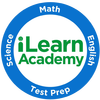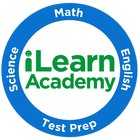|
If you have a child in school, you’ve likely heard of Common Core Standards. However, you may not know what these statewide standards entail, or how they affect your student.
Here is a breakdown of Common Core Standards, including where they came from, how they’re measured, and why they’re so divisive. What Is Common Core? Common Core refers to a set of educational checkpoints in math and language arts designed to standardize what students should learn in each grade level. The Standards were spearheaded by a group of state governors and chief school officers in 2009 and written by teams of college professors, education advocates, testing company employees and, after pushback from teachers’ unions, schoolteachers. Common Core is not a curriculum, rather, it’s a set of expectations detailing which skills students must master at each grade level in order to be considered “on track” for college and the workforce. Initially, all but four U.S. states adopted the Common Core State Standards. Today, five participant states have repealed the Standards, and about half have declined to use standardized testing to measure the Standards. Nonetheless, many states, including Illinois, use the PARCC or Smarter Balanced tests to measure Common Core Standards. Why Does Common Core Exist? Common Core was developed largely in response to concerns about American students’ academic performance compared to other nations. Proponents of Common Core were worried by the percentage of college freshmen enrolled in remedial courses because their math and language skills did not meet the requirements of college coursework. In 2008, one in five first-year university students needed a remedial course. College professors weren’t the only ones unimpressed with students’ abilities, according to Common Core supporters. Hiring professionals also complained that entry-level workers were missing key math and literacy skills. The increasingly globalized and competitive job market led many policymakers to call for more stringent, systemized standards for public schools. By creating a list of standards identical across all states, Common Core creators hoped to ensure students left school with the knowledge they need to succeed. Why Is There Controversy Surrounding Common Core? Since its inception, there has been vocal opposition to Common Core from teachers, parents and policymakers. Some worry that Common Core wrongfully makes workforce participation the aim of education, rather than the explorations of students’ unique minds and abilities. Others claim the program patronizes schoolteachers and prevents them from serving individual students’ needs. Some parents protest that the additional standardized testing creates unnecessary stress for students, while states’ rights advocates decry the involvement of the federal government in public school curricula altogether. Currently, there is no conclusive research that supports the efficacy of Common Core Standards, at least in terms of post-secondary or workforce achievement. However, this doesn’t mean the Standards are misaligned. So many participant states didn’t fully implement the standards or opted out of national testing, measuring the impact of Common Core has been a challenge. What Does Common Core Mean for My Student? Illinois still adheres to the Common Core Standards to measure student progress, but transitioned from the controversial PARCC test to the new Illinois Assessment of Readiness, or IAR, in 2019. Students will take the IAR annually in the spring. The new test is shorter, with a forthcoming computer adaptive model, faster results and better options for students whose first language is not English. Ideally, this test will be more reflective of student’s understanding of Common Core Standards. Your child’s IAR score will not affect his or her opportunities at school or beyond. These scores are used to measure the performance of school districts and teachers. However, you can use the scores to determine if your child needs extra support with math or literacy. On a day-to-day basis, Common Core likely informs which skills your child’s teachers focus on during lessons. Your student’s school may even use a curriculum aligned to Common Core. You can use the Common Core math and language arts standards to check in on your child’s academic progress and stay up to speed on his overarching learning goals. If you’re concerned your child is struggling with grade-level skills, a qualified tutor can help her catch up and lay the foundation for success. For information on iLearn Academy’s personalized learning plans and expert instructors, check out our curriculum page.
0 Comments
Leave a Reply. |
Categories |
We make a personal commitment to ensure each student is well-prepared for the academic school year.
Dedicated to helping your student succeed.
©
iLearn Academy 2019


 RSS Feed
RSS Feed
